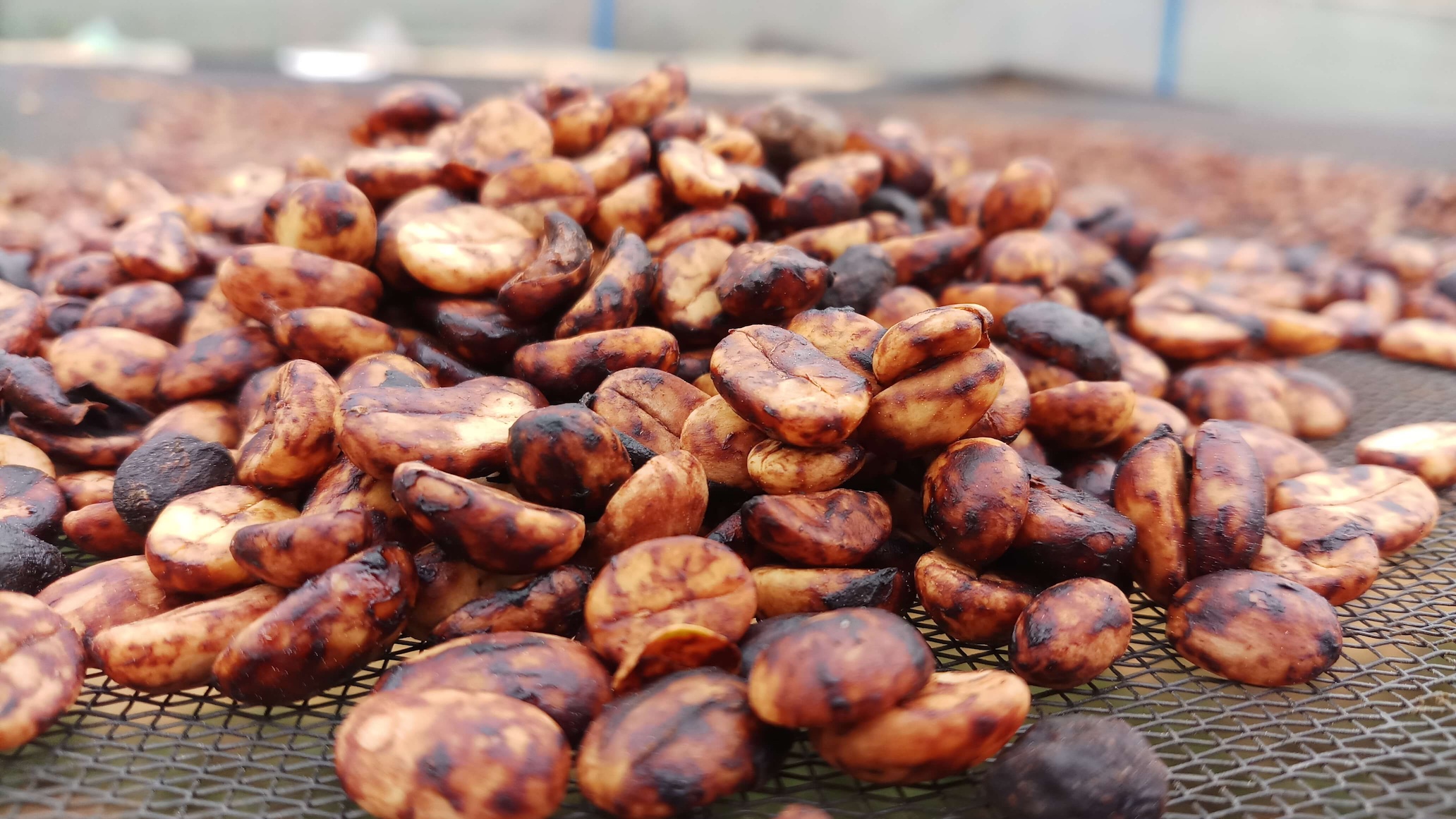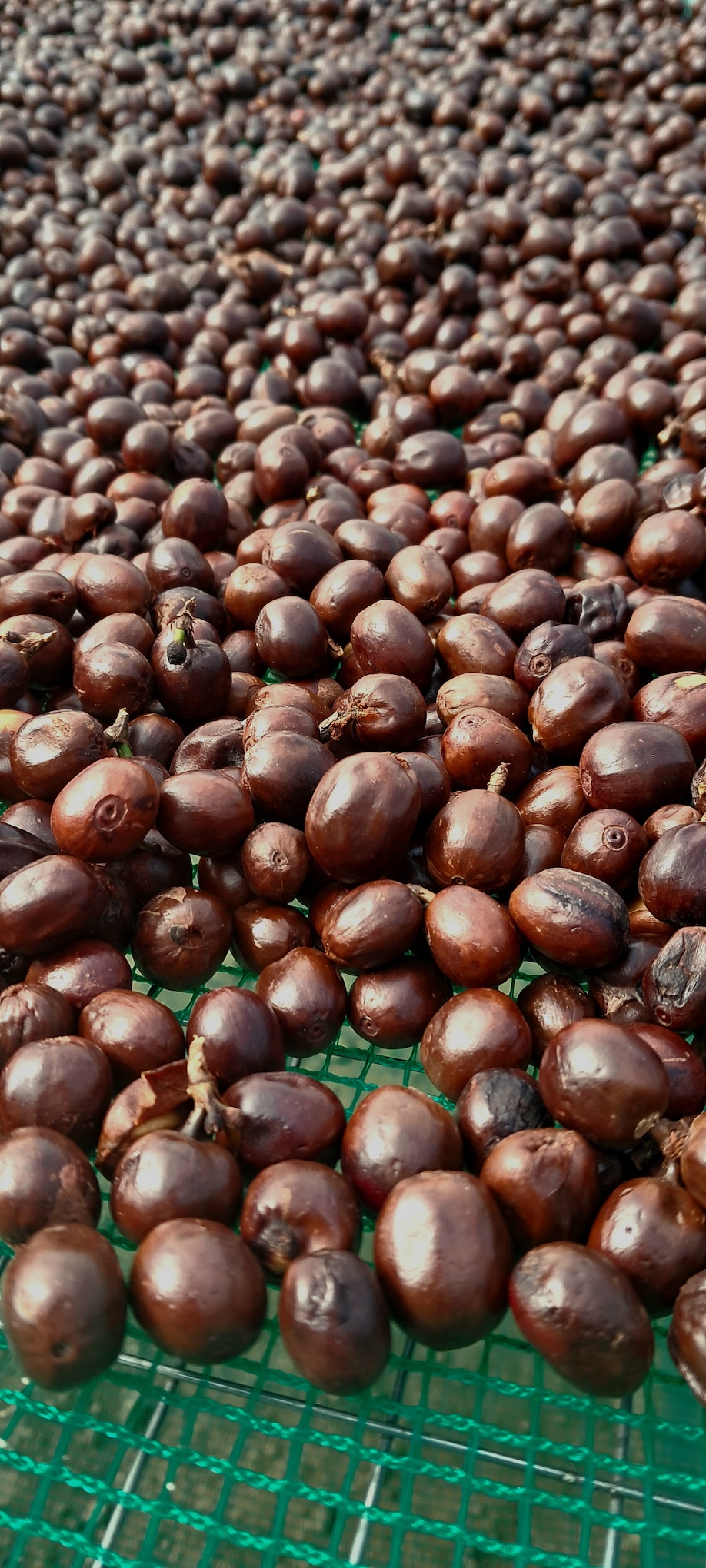Name
Although "pink honey" isn't a standard term found in typical coffee processing methods, we've chosen this name to highlight the unique color of the parchment after the coffee cherries have been pulped.
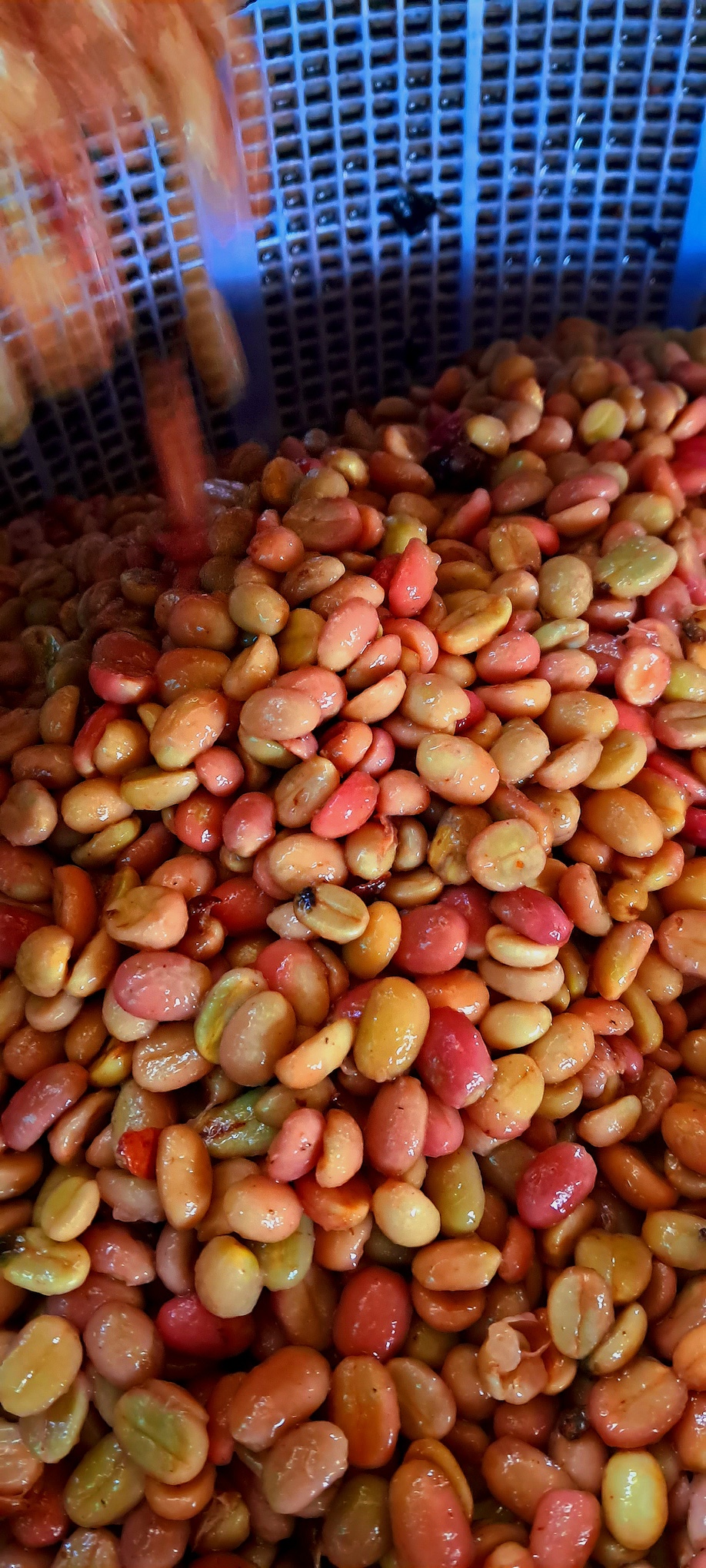
Fermentation
The process begins with carefully selected cherries, which are thoroughly washed and floated. Once sorted, they are placed into fermentation tanks for a controlled period of 60 hours under aerobic conditions, meaning oxygen is present during fermentation. These fermentation tanks are relatively shallow, which ensures even fermentation throughout, both at the top and bottom of the tanks. They are located in a stable temperature environment, promoting consistent fermentation and optimal flavor development.
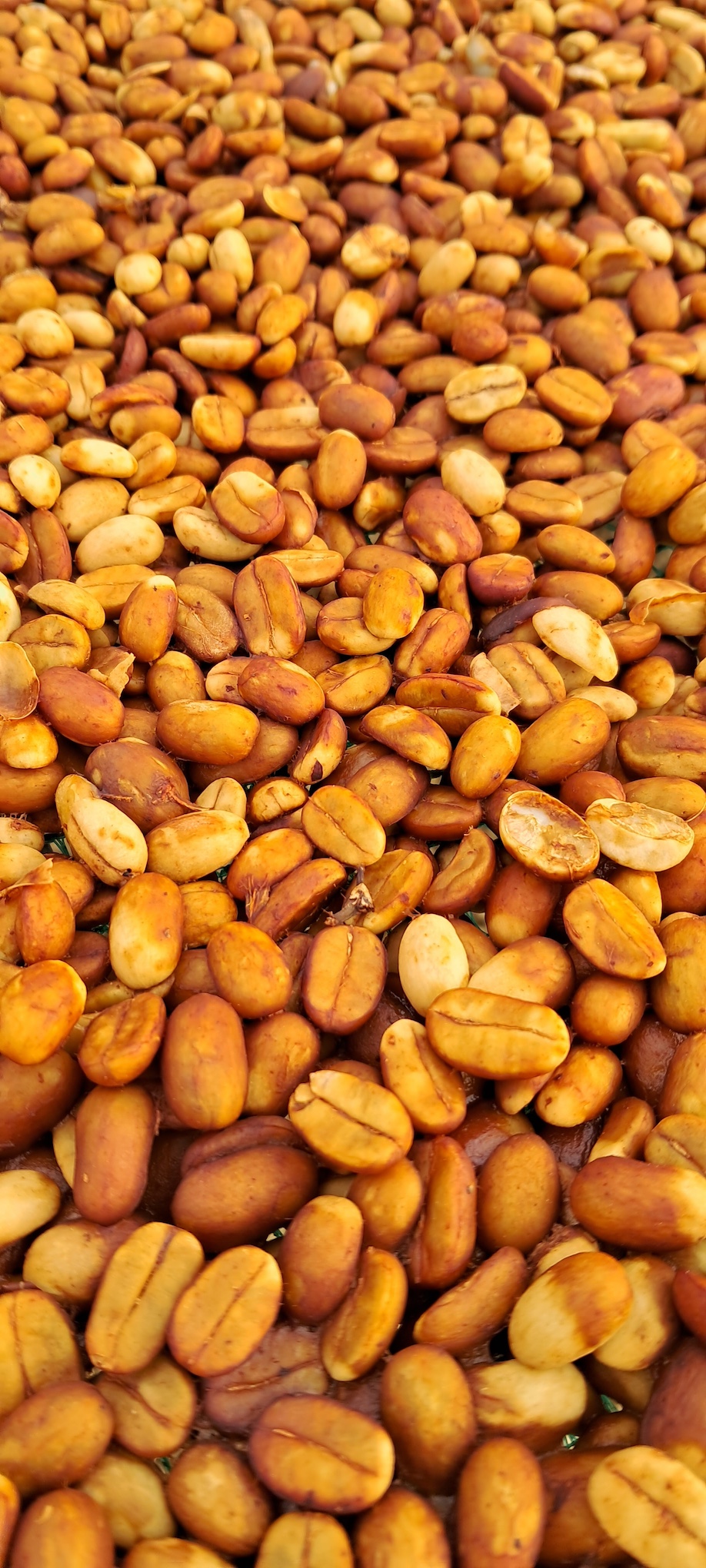
Drying
Following the initial 60-hour fermentation, the cherries are de-pulped, mucilage is retained on the parchment. This step is critical, as the sticky mucilage contributes to the unique flavor profile of pink honey coffee. To maintain quality, it's essential to monitor the coffee closely during the drying process, moving the beans multiple times a day. Even during drying, active fermentation continues on the drying beds, so careful attention is required to prevent over-fermentation and ensure an even drying process.
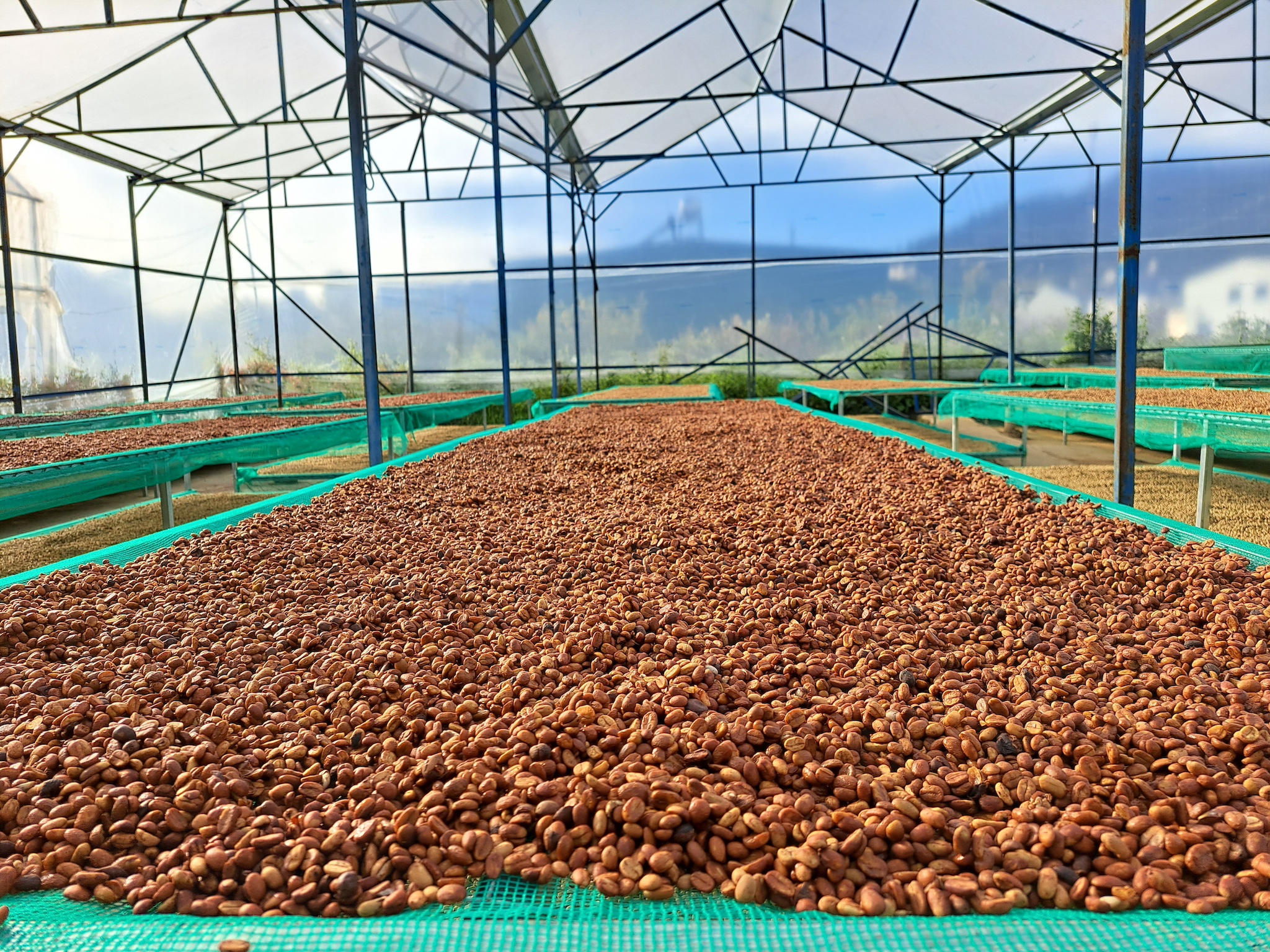
How it taste?
What can you expect from pink honey coffee? This processing method yields a distinctively sweet cup, featuring a candy-like sweetness complemented by rich cocoa notes and vibrant fruity undertones. The coffee has a remarkably smooth body and a juicy mouthfeel. This combination makes pink honey coffee an excellent choice for enthusiasts seeking both complexity and balance in their cup.
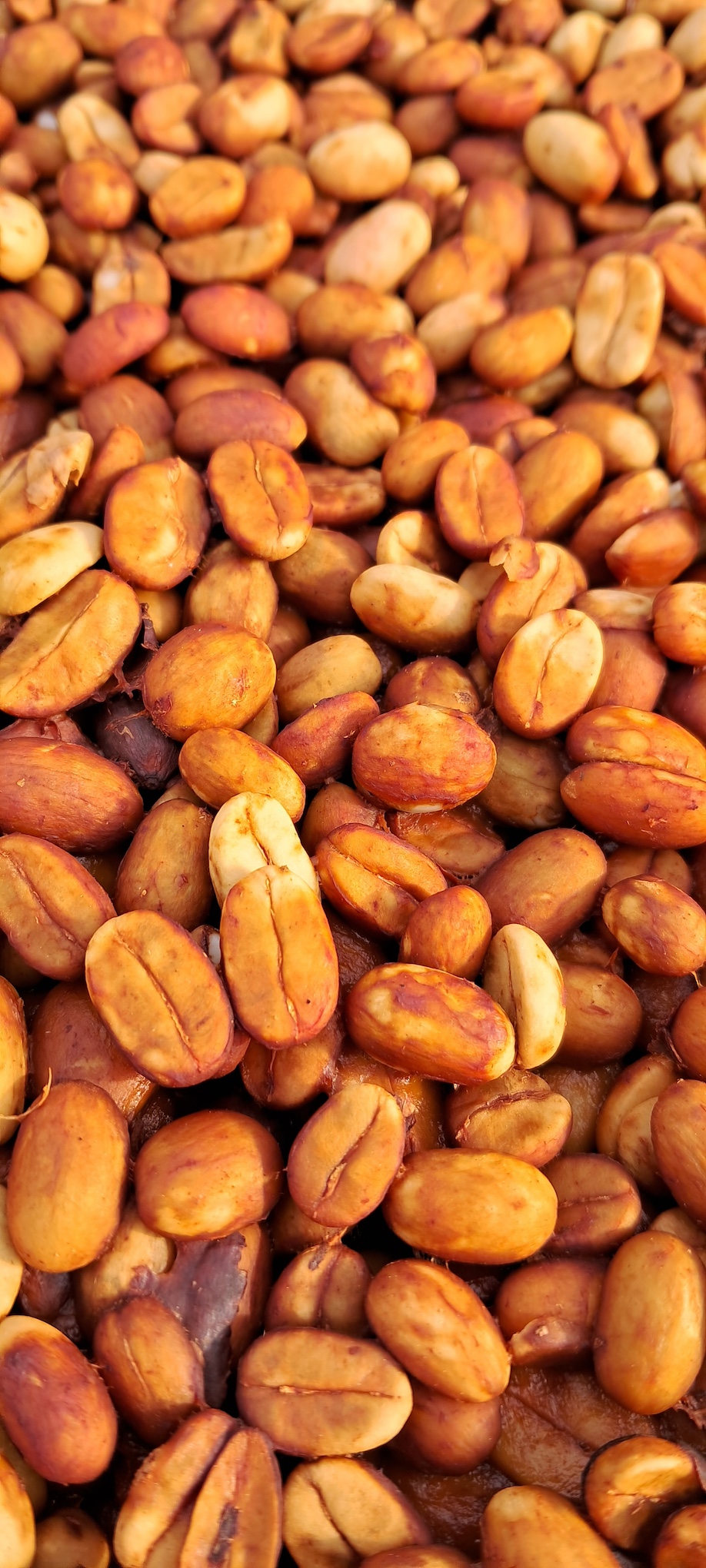
| Location | Langbiang Mountain plateau (peak 2167m), Lac Duong district, 15km from Dalat city |
| Altitude | 1500-1650 masl |
| Variety | Catimor |
| Harvest season | 2023/2024 |
| Producer | Zanya Cooperation, working together with over 30 smallholder farmers from K´ho ethnic minority |
| Bags in stock | 0 |
| Price | 275000₫/kg without VAT |


